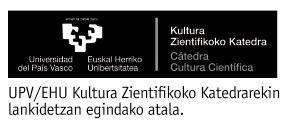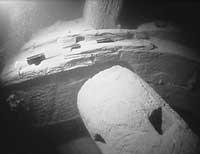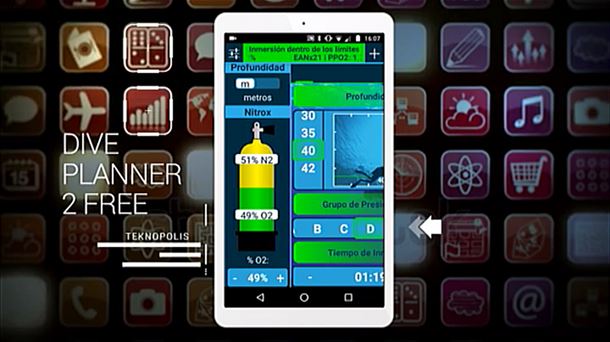“Ports are landfills”
2024/05/03 Galarraga Aiestaran, Ana - Elhuyar Zientzia Iturria: Elhuyar aldizkaria

Aixa Barbarin López is an underwater archaeologist and, as he has acknowledged, wanted to be an archaeologist from a very young age. Therefore, when the time came to go to university, he chose to study history at the UPV and immersed himself in archaeology. But it didn't occur to him to engage in underwater archaeology until he tried diving with a friend. He tried, liked, and when he saw that the University of Cádiz has a master’s degree in underwater archaeology, he saw it clear that it was his way: “He gave me the opportunity to add my dream of always and my new passion,” he says.
Thus, he went from Euskal Herria to Cadiz, where he is now dedicated to research in underwater archaeology: “I have realized that this is what I really want to do and it is a very interesting work. Very dynamic and a bit dangerous, but very interesting.”
He had previously worked on land deposits and, although in reality what needs to be done is the same, he has not concealed that underwater archaeology has difficulties: “When the deposit is shallow it is easier, but if not, care must be taken. Knowing how to eat well is essential, because otherwise it can be dangerous for you and others, and we always have to take it into account,” he explained.
On the other hand, to remove the sediments, they use other instruments, such as the so-called txupone: “It is an absorbent hose with which we are picking up sediments and pulling the other side until we find something. Sometimes, we have to remove two meters of sediment, and sometimes we have to be careful because we know that something is going to be there.”
In fact, there are many undersea footprints and of all ages. Now, above all, he said that they are in the ports and that they find everything in them. In fact, Barbarin says they are “landfills”: “We can find a refrigerator, for example, and in the same place, an amphora of the Phoenicians. In fact, from the boats everything is thrown into the port, both before and now. So, everything is built up. And sometimes we know that a boat sank there and that we can find materials like the cannons it was carrying, but the boat is not there, because the wood has gone apart. Therefore, we have to investigate to know what it was like.”
They also use documentation. In addition to the ports' entrances and exits, the sinks were recorded in the press, for example. When talking about sinks, he announced that some boats are currently being exploited voluntarily for tourist activities.
A submerged mercury well
Asked about the most shocking finding he has made, he replies that it was the one he did last year: “Last summer we were working for a month on an excavation in Croatia, on a 16th-century boat. It's a very big boat, with a huge load: glass cups -- and with mercury and arsenic, so we were told to walk carefully because they're poisonous. Well, as I cleaned up a board, I saw something strange, and it was a well, a mercury well. That’s the most amazing thing I’ve ever found.”
Explosives have occasionally been found and are therefore also at risk. In addition, physically it's hard work. And sometimes there's a bad sea or a galerna comes in and they can't do the planned works. Or a storm overrides the previous job. “We have to do all the work thinking that maybe the next day we can’t come back. Therefore, it is very important to document everything well, take pictures…”
In spite of the difficulties, Barbarin prefers submarine work rather than ground work. On the other hand, the works are very varied, so the work teams are interdisciplinary and the projects are international, so people from different backgrounds come together. Regarding gender, Barbarin has pointed out that in the business world and now also, most are men, while in the world of research he has highlighted that there are a lot of women, “the majority of the Center of Underwater Archaeology of Cádiz are women and the captain of the university’s oceanographic ship is also a woman. And the environment is very different, I work much more at ease among women.”
In the future I would like to continue to do underwater archaeology: “It is not easy, because there is not much work, but more and more are emerging, and I have hope,” he concludes, with a smile.

Gai honi buruzko eduki gehiago
Elhuyarrek garatutako teknologia







